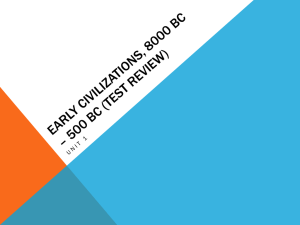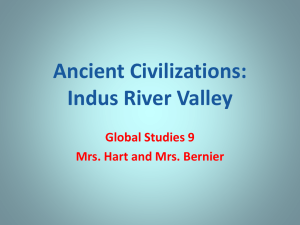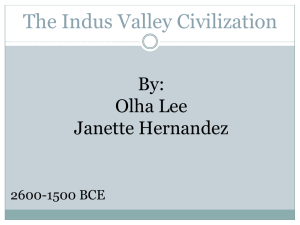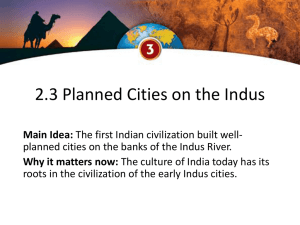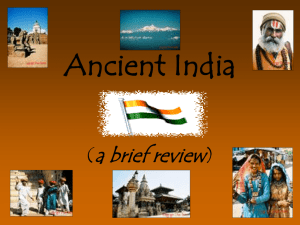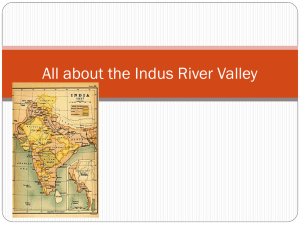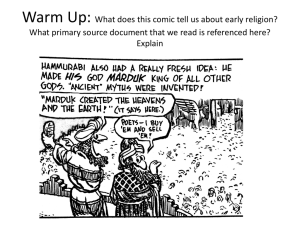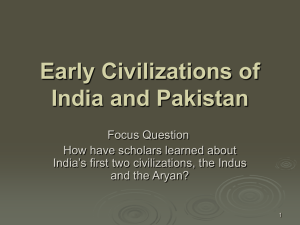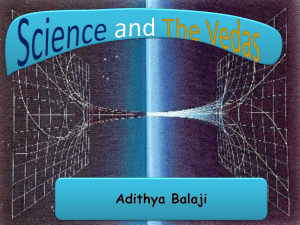WHICh3Sec1_2-2014
advertisement
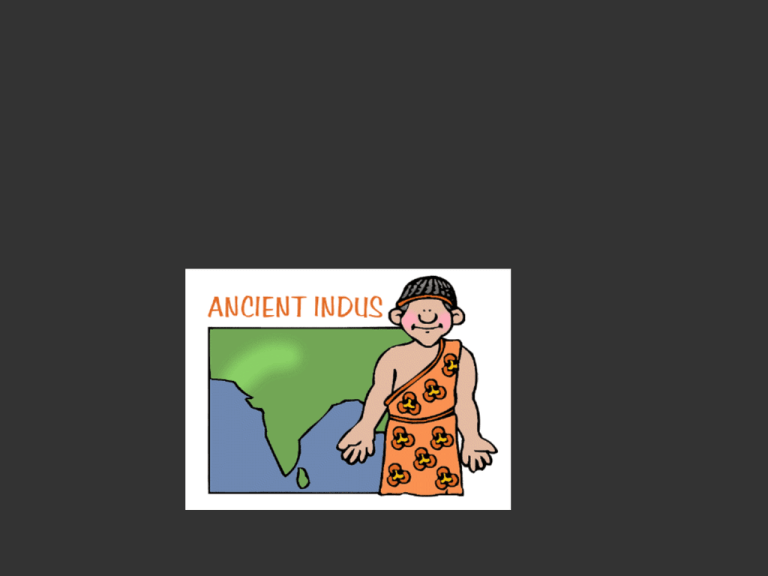
India Pakistan Bangladesh Nepal Bhutan Sri Lanka • The climate of the Indian subcontinent is characterized by high temperatures and monsoons, which are seasonal winds. • Nov-March is the dry season, when the winds blow from the northeast and bring very little rain - Jun-Oct. is the rainy season, when the winds blow from the southwest, is the rainy season. • The first known civilization in the Indian subcontinent arose in the Indus Valley and flourished from about 2500BC-1500BC • Although the Indus Valley civilization had a writing system it has not been deciphered, so all we know about it comes from artifacts found by archeologists. • There were many cities in the region. • The largest were Harappa and Mohenjo Daro • The Indus Valley civilization had 2 very large cities, Harappa and Mohenjo Daro, as well as hundreds of smaller cities and towns. It is called the Harappan Civilization. • Both cities were large and carefully planned • Wide streets crossed at right angles. • • Each city had a strong fortress, or citadel, built on a brick platform. • What does this suggest about the civilization? What problems might they have had? • On the citadel were large public buildings, including graineries for storing large amounts of grain to feed about 35,000 people, and large baths. Great Bath on the citadel of Mohenjo Daro • Great Bath on the citadel of Mohenjo Daro. • What could its function have been? ? MD • Both cities had a water system with wells and brick sewers. Sewers took waste water from homes into drains under the street, and out of town. • This was probably the most advanced water system and public drains in the world at this time. • As well as the citadel on a mound on the west, there was an area lower down to the east, where people lived. • The lower city was divided into rectangular blocks by straight streets. • The larger houses had wells and indoor bathrooms with seated latrines connected to sewers under the street. • In addition to residential areas,there were many shops and workshops, producing wares for local consumption and for export: • For example: potteries, dyers’ vats, metalworkers’, shellornament makers’ and beadmakers’ shops • Most buildings were built of mud bricks of approximately the same proportions 1:2:4. • Standard weights and measures were used throughout the Indus Valley region. Mohenjo Daro Other artifacts • Small objects which are probably children’s toys have been found. • For example this toy cart. From this toy cart archeologists have concluded that they probably had life size carts and wagong. Agriculture • Harappa and Mohenjo Daro were surrounded by rich farmland • They irrigated their fields by building canals and ditches. • Irrigation allowed Indus Valley farmers to have a surplus of food • They grew wheat, barley, rice and cotton. • They raised cattle sheep, goats and pigs Products and trade • City dwellers produced goods for trade. • These included pottery, bronze items, beads skillfully made of various materials, and gold and silver jewelry. • They traded these goods with the people of Mesopotamia. Writing • The Indus Valley people developed a writing system. • We have pictographs dating from about 2300BC • Scholars have not been able to translate this writing. Writing •• Most thethe Indus ValleyValley writing iswriting on personal seals that Mostofof Indus is on may bear the names of individuals or companies who personal seals made items for trade.that may bear the names of individuals or companies who made items for trade. Inscription on a pot • http://www.time.com/time/world/article/0,8599,1919795,0 0.html Religion Religion • No Harappan temples, shrines, or religious writings have been found. • There is evidence that they worshiped a mother goddess. • There is evidence that they used images of the bull, buffalo, and tiger. • The Indus Valley Civilization flourished about 2500BC1500BC. • It began declining about 1700BC • By about 1500BC, it “disappeared”. The cities were abandoned. • Historians do not know why the Indus Valley Civilization disappeared. • The waters of the Indus River have changed course in the past . . . . • The Indus River often flooded .. … • There is evidence of an earthquake about 1700BC …. • About 1500BC, a new group of people came in and began to dominate the area. Arrival of the Indo-Aryans • The Indo-Aryans were one of the sub-groups of the larger group called the Indo-Europeans. • Originally lived north of the Black and Caspian Seas, in what is now southern Russia. • They were nomadic herders of cattle • About 1750BC they began to cross the HinduKush mountains into India • By 1500BC, they had settled in Northern India • Some people have disputed this arrival of the IndoEuropeans, and if you search the web you will find some sites saying that it never happened. • But there are written records of the language that these Indo-European people brought with them to India, Sanskrit. • • • • • • • • • pitar (Sanskrit) pater (Latin) pater (Greek) padre (Spanish) pere (French) father (English) fadar (Gothic) fa∂ir (Old Norse) vader (German • We can read Sanskrit, and we can easily see that many words in Sanskrit are basically the same as in other Indo-European languages. In addition, recent genetic evidence supports the arrival of the Indo-Europeans. Indo-Aryans • Lived by herding cattle. • Cattle were so important to them that their word for war was “desire for more cattle”. • As they came into India, sometimes they were able to move into an area without conflict, but sometimes they fought the people already there. • . • The Indo-Aryans were good fighters and had skilled archers and war chariots, so they were able to conquer the people already living in Northern India. VEDAS • The Indo Aryans had hymns and prayers called the Vedas, that were passed down orally from generation to generation. • Eventually the Vedas were written down in the Indo-Aryan language, which was Sanskrit • The Vedas made up 4 collections of hymns. The oldest is called the Rig Veda • Most of what we know about the period 1500-1000BC comes from the Vedas, so we called this the Vedic Age Indo-Aryan Religion • Indo-Aryan Religion evolved into Hinduism • They were polytheistic, with many individual gods drawn from nature. • Including Indra, the god of storms, Agni, the god of fire, and Varuna, the god of the cosmic order. • However, the Vedas also refer to one supreme god of divine spirit, which is called “The One”. • Later, these gods, Indra, Agni and Varuna, became less important. • The Hindu gods Brahma, Vishnu and Shiva became more important, and are the most important gods today. Early Religious Practices • No temples. Worship was out of doors. • Fires were lit on altars, and offerings of butter, milk and barley cakes were made. • The juice of the Soma plant was poured into the fire as a special offering • Soma juice was regarded as the drink of the Gods. Brahmins • Priests called Brahmins carried out the rituals, which became more complex over time. • Only the Brahmins knew the proper rituals. • Gradually a form of social organization called the Caste System emerged. Caste System, or Varnas • Four distinct varnas, or social classes, appeared in Indian society. • Brahmins-priests • Kshatryas-warriors • Vaisyas (Vaishyas)-merchants and artisans; farmers who owned their own land • Sudras (Shudras)-farm laborers and servants. • According to a myth, the four varnas were made from the body parts of Purusa, a god. • Brahmins-from head • Kshatryas-from the arms • Vaishyas-from the legs • Sudras-from the feet. • Later, a lower group, called the Untouchables, or Pariahs, emerged. • Later, a lower group, called the Pariahs, or Untouchables, emerged. • People married, and had close social relationships, within their caste, or varna. • The language of the Indo-Aryans, Sanskrit, was gradually no longer used in everyday speech. • Sanskrit became the special language used by Brahmins in their religious rituals Political organization • Gradually the Indo-Aryans settled in villages & planted crops as well as herded cattle. • Small independent states grew up, each with a leader called a raja. • Rajas were military leaders, lawmakers and judges. • Rajas governed with the help of a council. SOCIETY • People generally, married, and had close social relationships, with people of their own caste, or varna. • Gradually, complicated rules for marriage emerged. • Parents usually arranged marriages. ECONOMYAGRICULTURE • The Indo Aryans, who were originally nomadic herders, settled and grew wheat, barley, and rice, as well as vegetables. Economy-Trade • Villages traded with nearby villages, but transportation was difficult. Usually, only cities on the coasts traded with distant areas. • Trade was carried out mainly by barter. Coins began to be used about 500BC. NORTHERN INDIASOUTHERN INDIA • The Indo-Aryans had a big impact on Northern India. Most of what we have just described applied to Northern India. • Early cultures in Southern India followed their own patterns. • The hilly landscape of Southern India made unification difficult, and people remained divided into separate communities and social groups. SOUTHERN INDIA • People who lived in the interior parts of Southern India, were farmers, or hunter-gatherers. • Some people who lived on the coasts of Southern India became traders, and some became wealthy trading cotton, spices and ivory with people of other civilizations. • The people of Southern India came to be called Dravidians.

